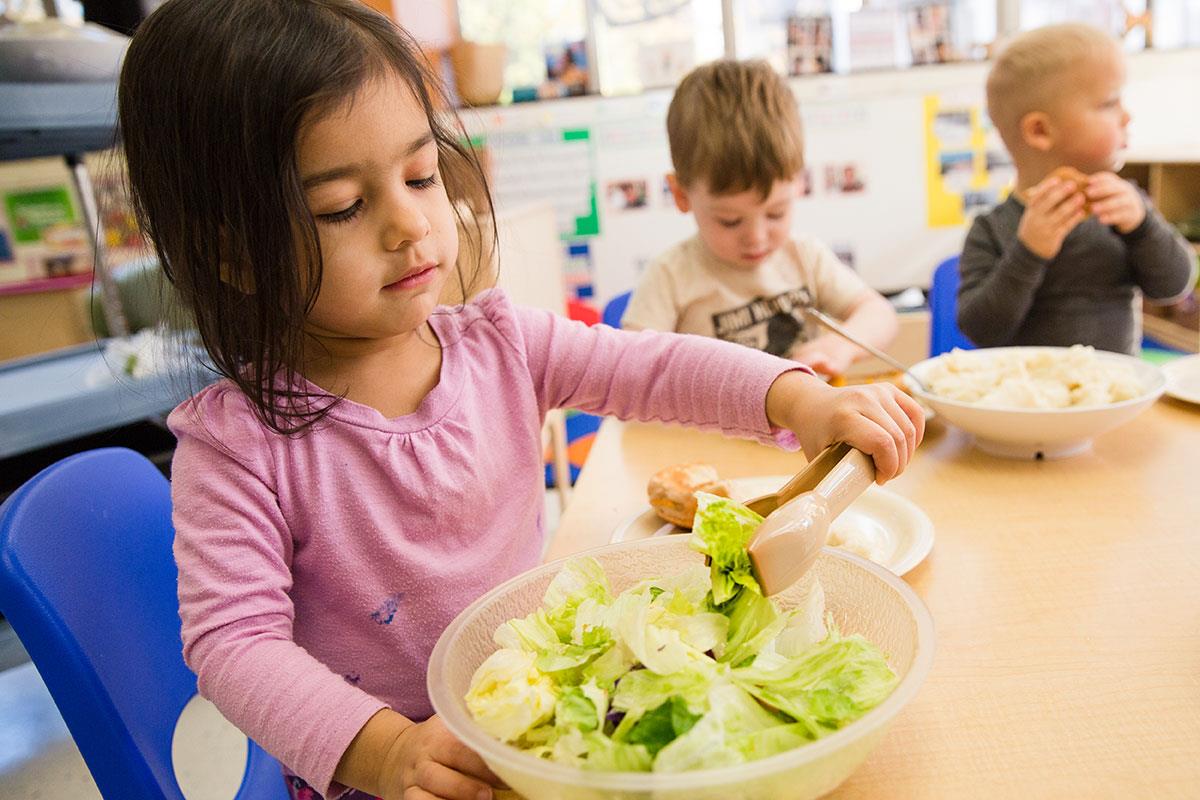The Smart Guide to Baby's First Finger Foods

Does your baby try to steal food from other plates? Do you have to wrestle the spoon from their hands while trying to feed them? Do soft, mashed foods go down the hatch without a hiccup?
If this sounds like your baby, say goodbye to puréed peaches and chicken smoothie, it’s time to dive into our guide to baby’s first finger foods! (Still working on bottle feeding and solids? We’ve got info for you —but double-check it with your pediatrician first.)
When should you start offering finger foods to your baby?
Make sure you keep an eye out for these telltale signs from your baby before making the switch. Trying finger foods (also called table foods) before they’re ready can be frustrating, which can make little ones less likely to try new foods.
• They’ve reached that age: There’s no specific age when all babies are ready to tackle finger foods, but the average is between seven and nine months.
• They control their head and neck (like a boss!): To prevent choking, babies must be able to sit up straight in a high chair.
• They can chew (with or without teeth): Babies should be able to “chew,” even if that just means mashing food with their gums.
• They’ve started using the pincer grasp: They’ll need the basic ability to pinch and hold food between their thumb and forefinger so they can bring food up to their mouth.
Which finger foods should your baby try first?
When you’re ready to add finger foods to your child’s menu, choose soft, easy-to-swallow foods that are cut into slices or pieces smaller than a dime. Good options for foods your baby can try first include:
• Scrambled eggs (contrary to popular belief!)
• Small cubes of tofu
• Shredded cheese
• Finely chopped chicken or ground beef
• Flakes of boneless fish (choose low-mercury options like canned light tuna, salmon, tilapia, and cod)
• Cooked potato or sweet potato chunks
• Well-done pasta (no al dente before they have dentes!)
• Rice (try mixing it with cheese or a purée to make it easier to grasp)
• Cereal (low sugar, please)
• Avocado
• Banana
• Cooked peas
• Cooked carrots
• Steamed and cubed broccoli or cauliflower
• Steamed and cubed zucchini or winter squash
• Peeled pear spears
On the other hand, don’t serve foods that are hard to chew or swallow, because they could be choking hazards. Foods to avoid for your baby include:
• Hot dogs
• Whole nuts and seeds
• Dollops of nut butter
• Chunks of meat or cheese
• Whole grapes
• Popcorn
• Pretzels
• Raw vegetables
• Chunks of hard fruit
• Candy
• Processed foods
• Foods with lots of sodium, sugar, or preservatives
How to begin introducing finger foods to your baby
A couple weeks before making the switch to finger foods, start by thickening up your baby’s purées to make the transition to finger foods a little easier. When it’s go-time, scatter a few pieces of food on a plate or high chair tray. Start small—you can always add more if they’re doing well, or if they’re super hungry. They may pick up the food immediately and eat, or they may want to explore it a bit first. Is it okay if babies play with their food? YES! Playing with food is a great sensory experience and part of the learning process, so resist the desire to swoop in with a spoon or a washcloth.
If they don’t get it right away, try modeling behavior. Show them how you pick up the food, put it in your own mouth, and chew. When your baby takes their first bites, don’t be alarmed if they gag, cough, or spit the food out—learning to eat is a process, but they’ll get the hang of it.
The shift to finger foods isn’t going to happen overnight. Until the one-year mark, your baby will still be getting most of their nutrition from breast milk or formula and nutrient-filled purées and mashes (ideally thicker and thicker ones). It’s fine to introduce finger foods one at a time, or to take a break from foods that your baby finds challenging. Even if their foray into finger foods is a slow one, they’re still learning great lessons (never mind the spaghetti everywhere along the way…).




